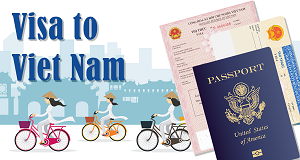Irrigation projects to boost development in Kon Tum
Ha Noi, March 15 (VNA) -- Irrigation has really become a key factor in socio-economic development in Kon Tum central highland province since the province was liberated on March 17, 1975.
The province has increased its irrigation projects from only two before liberation to 45 at present. As a result, almost 4,000 ha of winter-spring rice and 11,410 ha of autumn rice crops and dozens of thousands of hectares of industrial crops are irrigated.
Irrigation has helped Kon Tum register an annual food output of 100,000 tonnes and an average per capita food share of 307 kg per year over the past five years.
With the irrigation network, the local farmers have cultivated two to three rice crops a year instead of one. They have also expanded the area of high-economic-value industrial crops.
Bo Y, a border commune with a population of more than 1,000, has also benefited from irrigation works. All families in the commune, especially the Brau minority people, have settled down and planted wet rice, coffee and fruit trees.
Irrigation has turned the Sa Thay waste land region into the second major rice growing area in the province after Kon Tum township, the head of Sa Thay district's agriculture service said. He added that irrigation has also helped underdeveloped Dac Ha district become the biggest industrial crop growing area and a special economic zone in the province.
Kon Tum is a major coffee producer in Viet Nam. The province currently has an area of 14,000 ha, yielding between 2.5-3.3 tonnes of coffee beans per hectare.
Besides growing coffee, the province has also planted cassava, hybrid maize, rubber, sugarcane and fruit-trees.
As a multi-ethnic minority province with 53 percent of the population being ethnic minority groups including the Xo Dang, Gie Trieng, Brau, Ro Mam, Ba Na and Gia Rai, Kon Tum province has succeeded in putting an end to a nomadic life and the slash-and-burn method of cultivation. Almost all ethnic minority groups have settled down and engaged in sedentary farming.
The sedentary farming programme together with the national poverty reduction programme have contributed to improving the local people's living conditions. More than 14,600 households escaped from poverty in 1999. In particular, the number of households getting access to electricity and safe water supply has increased while medical stations and schools have been built in every village.
However, Kon Tum is still one of the poor provinces in Viet Nam with 26 of 79 communes classified as poor.--VNA



